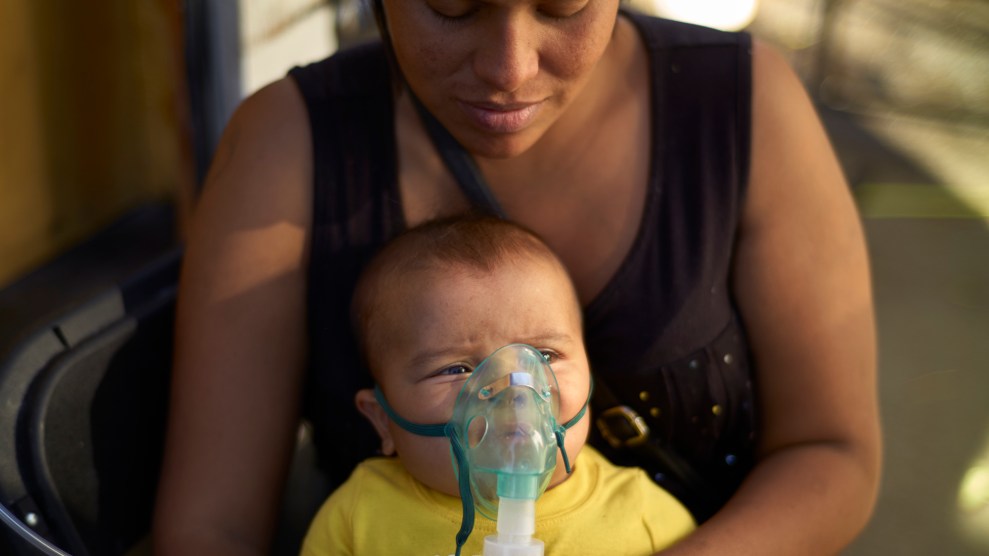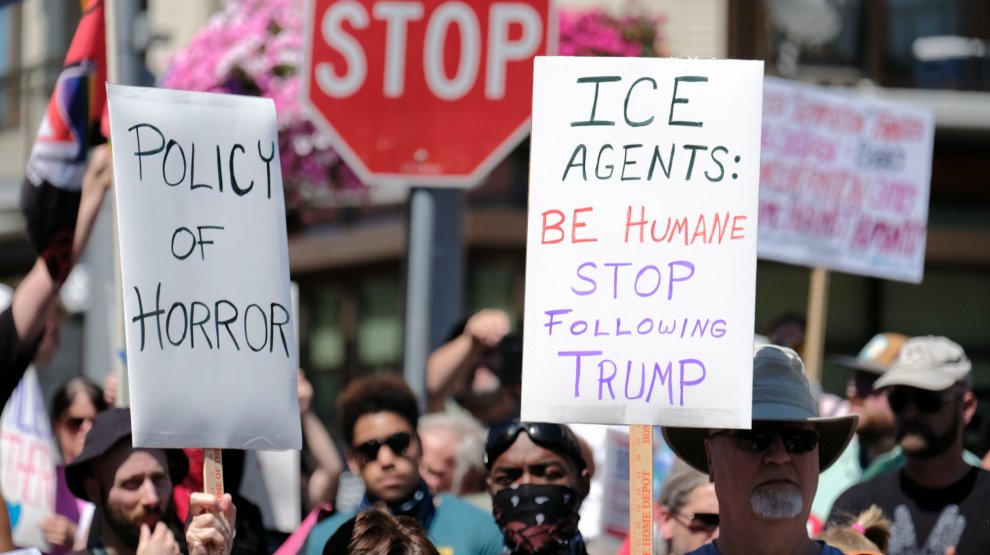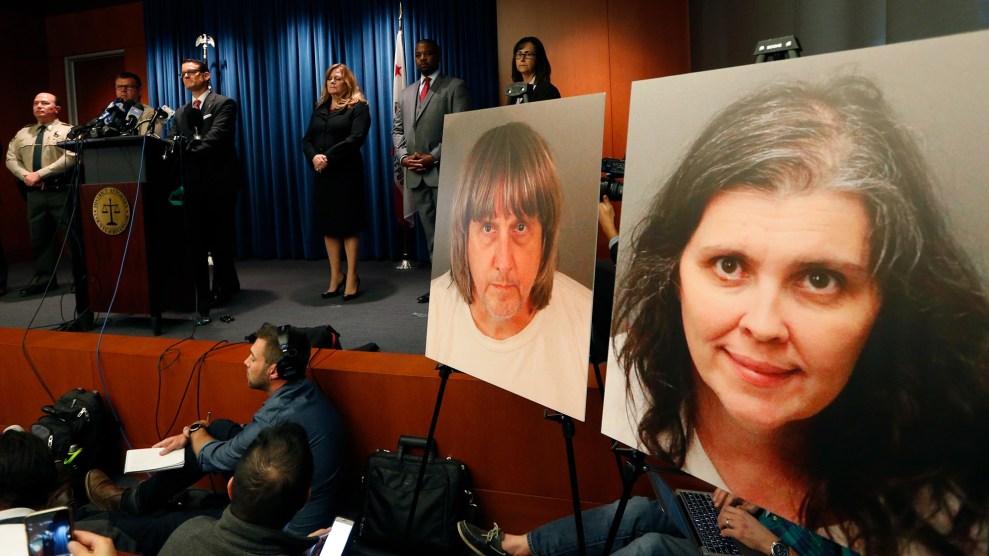
Imgorthand/Getty
This story was originally published by ProPublica, a nonprofit newsroom that investigates abuses of power. Sign up for ProPublica’s The Big Story newsletter to receive stories like this one in your inbox as soon as they are published.
Experts have long suspected that the United States badly undercounts the number of children who die from abuse and neglect. The voluntary reporting system relied on for decades may be off by at least 200%, they say, missing thousands of fatalities.
In 2012, Congress moved to make information about the deaths more accessible to the public by requiring states to release detailed reports on child fatalities and near-fatalities. But when The Boston Globe and ProPublica set out to collect these reports, it turned into a frustrating, three-year slog through child welfare offices from Maine to Hawaii.
In the end, 41 states handed over data on some 7,000 child fatalities from 2011 to 2015—slightly more than they had reported over the same period to the voluntary system, called the National Child Abuse and Neglect Data System, or NCANDS. That’s far short of the more than 15,000 child abuse and neglect deaths that many experts estimate for the five years.
Still, the state reports, published here for the first time on Bostonglobe.com and propublica.org, are more detailed than any that had been publicly available, giving far more specific information about how children were harmed and who harmed them.
The data largely confirm what is known from the voluntary system—that male children are slightly more likely to die of abuse and neglect and children under the age of 3 are the most common victims of mistreatment—but with new specificity. Blunt force trauma was the most common cause of violent death, for example, while neglect deaths were most commonly related to unsafe sleeping conditions.
Just as striking, though, was what was missing. Wyoming, for example, released nothing at all, declining to answer questions about why the data was withheld. Montana also released no data, acknowledging that that failure was a violation of the Child Abuse Prevention and Treatment Act, the main federal child abuse law for children not in state custody. Kansas wanted to charge more than $11,000 for the information and would not answer questions about the cost. (Montana and Kansas have passed laws making their data more accessible, but not retroactively, so they would not provide the years requested.)
Other states left out important information, such as the specific cause of death, even though rules set by the U.S. Department of Health and Human Services say that’s among the “minimum” facts that must be released. Some states insisted that turning over this information would violate laws protecting the privacy of at-risk children and their families.
More than a dozen states provided no information on near-fatalities and many said they don’t even track them.
The result was a far murkier picture of child maltreatment in the United States than advocates imagined when Congress mandated states report this information.
“This is one of the few areas where Congress has removed the cloak of secrecy and still, some states are trying to operate this way,” said Elisa Weichel, an attorney with the Children’s Advocacy Institute in San Diego. “We can’t learn from our mistakes if we don’t know what happened.”
In May, the House approved a bill that would reathorize CAPTA and update the voluntary guidelines around data collection to create uniform standards for the counting of near-fatalities and fatalities. It would also create an electronic system to allow states to share information, but its prospects are far from guaranteed. The Senate is still working on its own version and experts expect it to differ in ways that will require compromise.
“I don’t think it’s going to be a silver bullet, but it will improve things,” said John Sciamanna, vice president of public policy for the Child Welfare League of America. “We just don’t have a huge stick right now because the funding for CAPTA is so low. We’re making progress increasing funding, but we have a long way to go.”
Without reliable information on child abuse, officials are unable to craft fact-driven policies and prevention efforts, said Vincent Palusci, a professor of pediatrics at NYU School of Medicine and a nationally regarded expert in child abuse. Instead, they are left to react to the most extreme, headline-grabbing cases with little notion of broader, systemic patterns or warning signs within individual families.
If there were stronger mechanisms for collecting and disclosing data, Indiana officials might have been able to do more to save Micahyah Crockett.
In February 2014, Micahyah’s 2-year-old sister, Alaiyah, was rushed to the emergency room. Their mother, Nyesha Crockett, told doctors the girl had been accidentally strangled on a scarf, but records showed the state’s Department of Child Services suspected maltreatment. Alaiyah was left in a vegetative state.
Though DCS officials referred to Alaiyah’s case as a near-fatality in internal records, state law barred disclosing such suspicions; Indiana released no public information at all on near-fatalities at the time, short-circuiting public scrutiny. (Indiana DCS declined to comment on the handling of the case.)
Then, in August 2014, Crockett killed 11-month-old Micahyah, admitting to authorities that she asphyxiated, kicked, slapped and shook the tiny boy. After confessing that she’d also strangled her daughter six months prior, Crockett was sentenced to 80 years in prison. Alaiyah died in early 2017.
John Broden—then a state lawmaker, now a county judge—blamed Indiana’s definition of what constituted a near-fatality for helping to obscure the truth about what happened to Alaiyah until her mother’s confession. Broden championed a bill to change this, which passed but has yet to be put into practice.
“DCS may have information that could be used to prevent similar situations,” he said. “I felt that if the information could be released more easily, without compromising confidentiality, it would be a step forward for child welfare.”
Experts agree the voluntary reporting system, in place since 1988, is badly flawed, capturing only about 1,500 deaths a year when researchers say the true number may be upward of 3,000.
Partly, that’s because states decide whether and how much information to submit to NCANDS, and officials frequently do not have access to information on many deaths that should be reported. In most states, for example, police do not report abuse or neglect deaths to child welfare agencies, so state officials may not even know about such fatalities unless they ask.
These inconsistencies make it virtually impossible to use NCANDS to compare numbers from different states or even to spot trends or trouble areas within states, experts say.
“It’s like comparing apples and oranges and bananas and tangerines,” Weichel said. “I think the public assumes that there is a better system in place to know which children are killed or nearly killed, and what remedies are proposed in response. It’s the opposite—we’re getting incomplete information, and you have to fight tooth and nail for any information you get.”
The new reporting requirements imposed by Congress in 2012 offered a better approach, mandating that each state disclose the age and gender of each child killed or nearly killed by maltreatment, as well as the cause and circumstances that led to the harm and whether there had been any previous involvement by protective services relevant to the incident.
Our effort to collect this data shows a glimmer of its promise.
A number of states disclosed fatalities to us that were not in the data they submitted to NCANDS. Indiana’s reports show 162 child fatalities for 2011 to 2015, 31 more than it reported during the same period to NCANDS. Connecticut produced records on almost twice as many child fatalities as it had reported under the voluntary system. Maine reported 49 deaths for 2011 to 2016 when it had informed NCANDS of only two.
In contrast with the public reports available on NCANDS data, the information collected by the Globe and ProPublica also depicts in clear detail the specific manner of death of most of the 7,000 children on which we received reports.
This information can be used to bolster public intervention programs, said Frank Vandervort, a clinical professor of law at the University of Michigan and longtime child welfare advocate.
Some 1,200 children in our data set appear to have died from positional asphyxiation or suffocation due to unsafe sleeping conditions, such as bed-sharing with a parent or sleeping with stuffed animals or large blankets.
Vandervort said more detailed data on such cases can help advocates in shaping public education campaigns.
“This data set provides the opportunity to say that unsafe sleep is a real problem—a large number of children are dying from this,” he said. “There are a lot of public policy implications.”
Ultimately, few states provided what HHS considers the minimum information for each child who died or nearly died.
Michigan, for example, denied our initial records request entirely, then did the same after an appeal before finally releasing some of the material last year.
“It was a mistake on our part,” Bob Wheaton, a spokesman for the Michigan Department of Health & Human Services, said in a statement about the denials. “The department is taking steps to ensure the information is publicly available in the future.”
Tom DeMatteo, attorney for the Connecticut Department of Children and Families, at first said he was unaware of any requirement to disclose the records we requested. Then he said the request should have been made to the Office of the Child Advocate. That same week, however, Faith Vos Winkel at the Office of the Child Advocate told us the opposite. “I think what you are requesting falls under the purview of the Department of Children and Families,” her e-mail said. (The Department of Children and Families subsequently provided some records.)
Some states also didn’t know what CAPTA requires them to release about whether there had been contact between state social workers and children who later died. Experts say that roughly half of fatally abused or neglected children have had contact with social workers before their deaths. Yet, Alabama state protective services officials said there was “pertinent” prior contact in only two of the 160 child death cases in their state.
“There’s no way that’s accurate,” said Theresa Covington of Within Our Reach, an organization established to advance the recommendations of the Obama administration’s Commission to Eliminate Child Abuse and Neglect Fatalities.
As spotty as the data on fatalities is, the information on near-fatalities is markedly worse.
This reflects, in part, a wrinkle in the disclosure law. It requires states to release information about near-fatalities when asked, but does not explicitly require them to track these cases systematically or report them to the federal government. It’s clear many states don’t have any sort of tracking mechanism.
“The department does not collect or report on near deaths, as we have been told by our federal partners that we are not required to do so,” wrote Sarah Woods, the assistant legislative liaison for Alaska’s Department of Health and Social Services.
CAPTA defines a “near fatality” as a case in which a doctor determined a child to be in “serious” or “critical” condition, but states often use different definitions.
What data exists is obviously incomplete, experts say, because states provided so few records of these cases. Massachusetts produced records for one-third as many near-fatalities as fatalities. Iowa, Hawaii, Texas and New Mexico said they had almost equal numbers of deaths and near-deaths.
“You’d expect the number of near-fatalities in any given state to be several times the number of fatalities,” said Emily Putnam-Hornstein, a professor at the University of Southern California who has spent years studying fatality statistics. She called it “crucial” that these cases be properly reported as “by definition, the child is still alive, and it is imperative we understand what happened to them.”
Many state officials contacted by the Globe and ProPublica said the major issue is not reluctance to comply with federal law—it’s a simple matter of money. Even states like Louisiana, which complies with CAPTA’s public data requirements to the letter, struggle to keep up because of a lack of resources.
The federal government distributes $85 million a year to the states to help meet CAPTA’s demands, but this money is meant to cover everything from handling drug-affected infants to services for homeless families, not just data collection.
“The money is not nearly enough,” said Amy Harfeld, national policy director at the Children’s Advocacy Institute. Harfeld said many child welfare agencies are “starved” and cannot afford appropriate software and staff to track and report the data as required.
In Louisiana, collecting the data required the solitary worker who managed the state’s data to comb through one database to create death reports from scratch, while using other computer systems to fact check the information.
The state has been promising to integrate the department’s systems since 2003, but hasn’t done so until recently.
Under the state’s current administration, Louisiana’s Assistant Secretary for Child Welfare Rhenda Hodnett said funds have “finally” been secured to move forward with the long-planned comprehensive system—but completing it will take years.
Experts say the lack of technology in Louisiana and other states is no surprise—and they lay the blame squarely on the federal government.
“If you are going to impose these requirements, you need to make sure funding is available,” Putnam-Hornstein said. “Otherwise, it’s going to be very difficult to enforce compliance.”
















